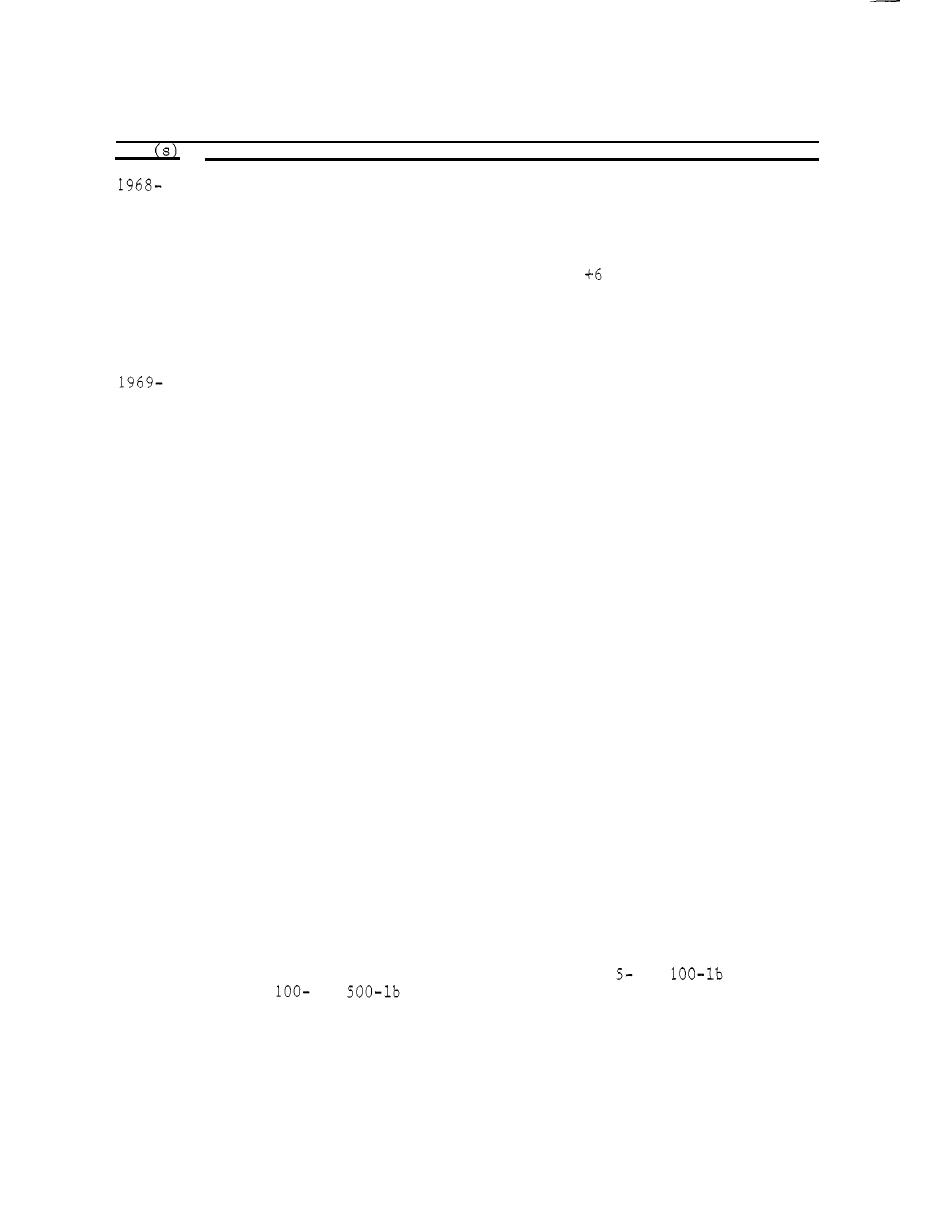
Table 31 (Continued)
Date
Construction and Rehabilitation History
the placed sheet pile. The deposition basin was dredged to provide
1969
a 300,000-cu yd volume to accommodate a 2-year supply of material
(Cont)
and was roughly rectangular in shape and 300 ft from the weir sec-
tion of the jetty. General design of the jetties was very similar
to that of the Perdido Pass jetties. Armor stone sizes were deter-
mined for depth-limiting conditions for a
ft mlw storm surge
superimposed on a 12-ft water depth, resulting in a wave height of
14 ft. Total quantities placed were 61,000 tons of cover stone and
core stone and 24,200 tons of blanket material. The total cost of
the project (including dredging) was 0,000.
In March 1969 approximately 150 lin ft of timber wales were missing,
and others had become loose in a number of spots. Similar problems
1970
with the timber wales had occurred at the Perdido Pass and Masonboro
Inlet weir jetties. The loose wales were refastened by "lock"
bolting.
In April 1969 a field inspection (22 April) showed that all the
refastened wales were in excellent condition. A scour though had
formed on the channel side adjacent to the weir, while depths on the
seaward side were similar to those encountered during construction
of the weir.
In June 1969 field inspection (June 5) showed that approximately
100 ft of the concrete sheet-pile weir had failed (apparently the
sheet piles had been undermined by scour and had fallen inward
toward the deposition basin) near the landward end of the weir sec-
tion (where the piles were 10 ft long and originally driven into
about 7 ft of sand). Water depths around the weir failure area were
up to 15 ft, while on the seaward side of the still intact weir sec-
tion they were 4 to 5 ft. By the end of June, 57,100 cu yd of
dredged material was placed as a stop-gap measure to prevent further
loss of sheet piles. The gap in the weir at that time was 135 ft.
In March 1970 an annual survey revealed that the dredged sand placed
on the damaged weir section was completely removed. Approximately
260 ft of sheet pile was missing and an additional 40 ft, on the
landward side of the gap, was in poor condition. The existing
depths were up to -25 ft mlw where the weir had existed originally.
From June to September 1970 repairs were made to the sheet-pile weir
when 71,500 cu yd of dredged material was placed in the weir gap to
an elevation of -6.5 ft mlw. A 300-ft-long rubble-mound weir sec-
tion was placed along the original weir line. The section (Fig-
ure 55) consisted of a 2.5-ft-thick layer of
to
blanket
to
cover stone, and 3-ton minimum weir stone
stone,
(Continued)
(Sheet 2 of 4
)
96



 Previous Page
Previous Page
